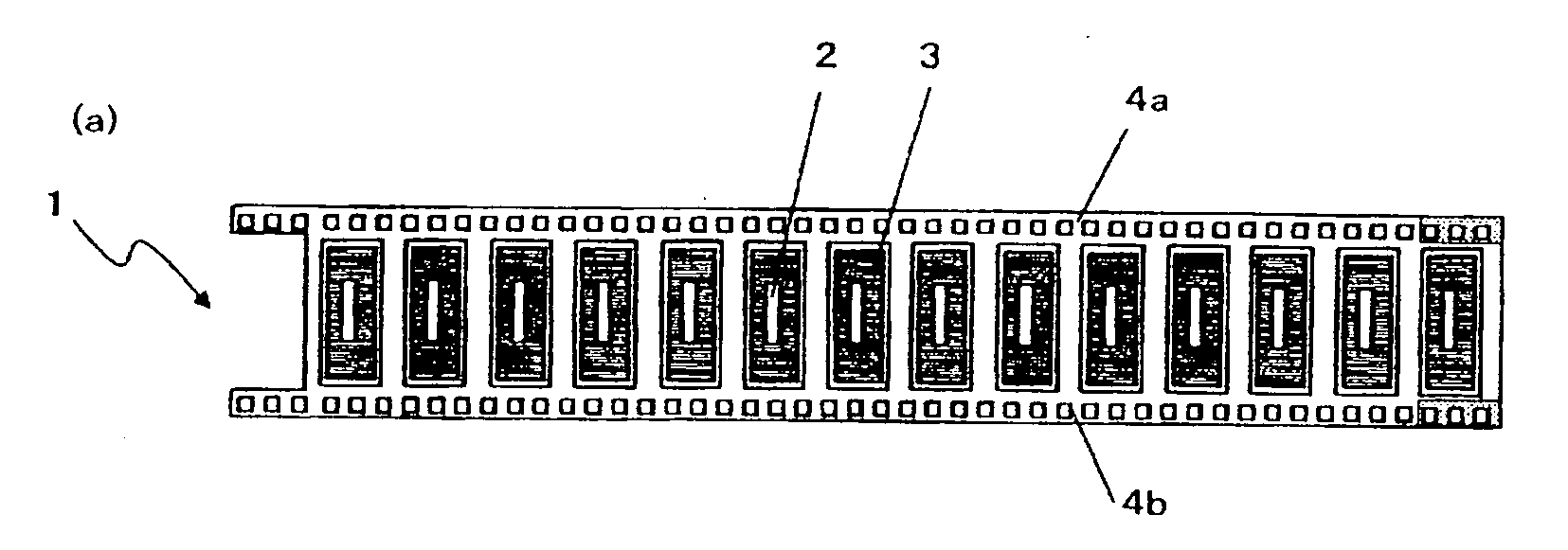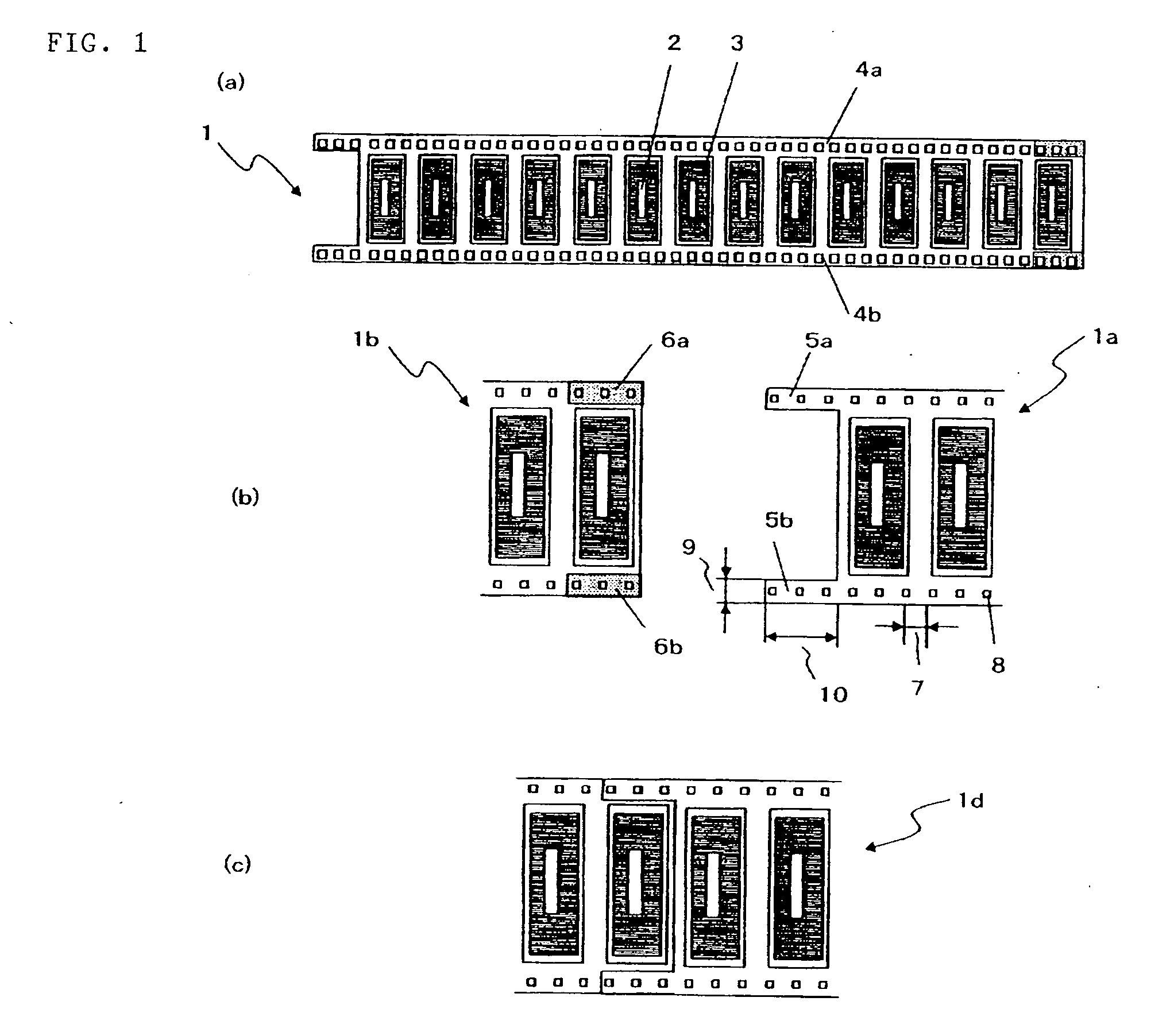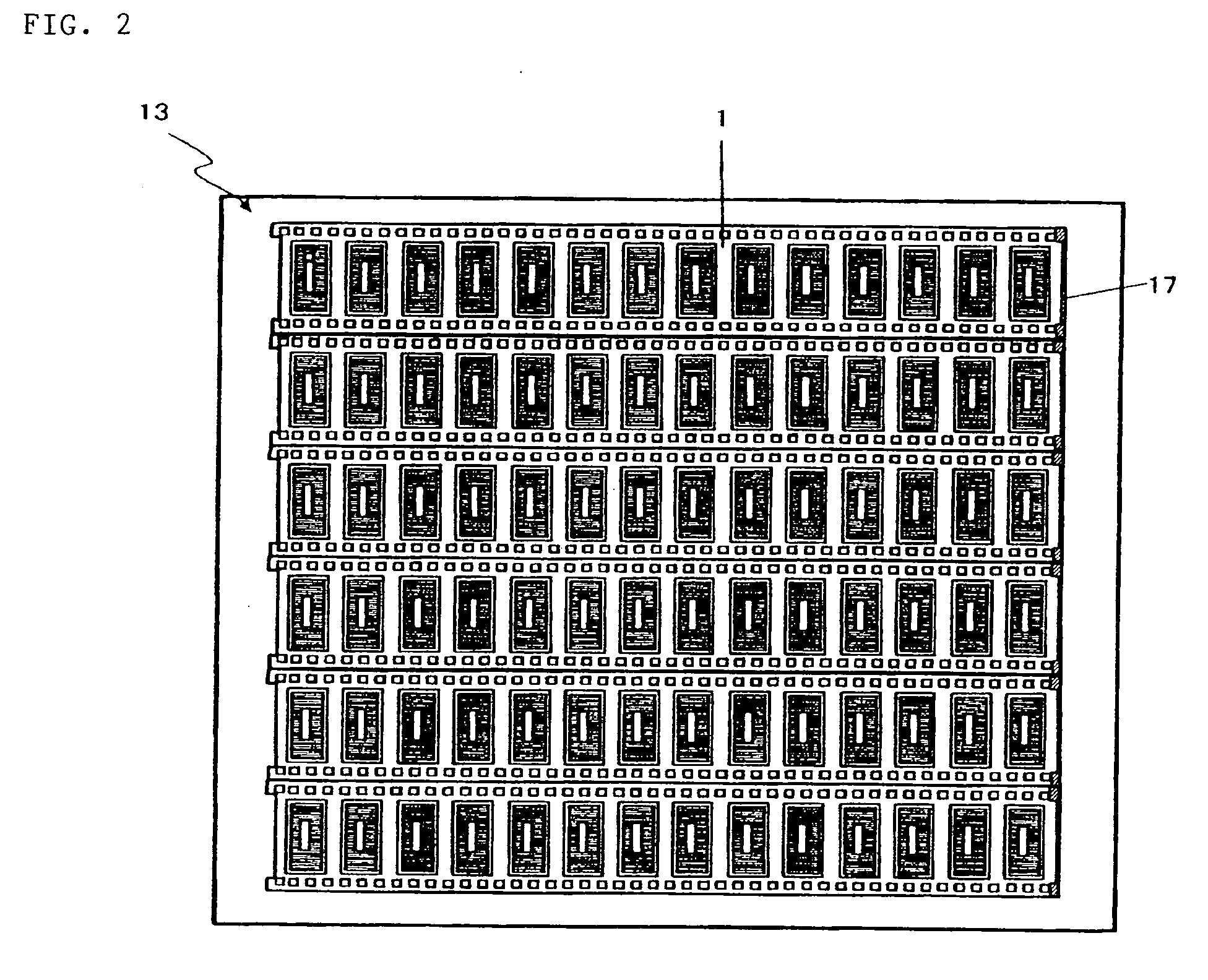Tape-Style Flexible Circuit Board, and Manufacturing Method and Manufacturing Apparatus for the Same
a flexible circuit board and tape-style technology, applied in the direction of printed circuit aspects, transportation and packaging, chemistry apparatus and processes, etc., can solve the problems of reducing the range to which the above-described proposal is applied, the loss of connection portions approaching the limit, and the inability to meet the requirements of precision, etc., to reduce the loss of connection portions, and reduce the loss of flexible circuit boards
- Summary
- Abstract
- Description
- Claims
- Application Information
AI Technical Summary
Benefits of technology
Problems solved by technology
Method used
Image
Examples
example 1
[0233]A tape-style polyimide film (“Kapton” 150EN (trade name), made by Dupont-Toray Co., Ltd.) having a thickness of 25 μm was prepared as a base film which formed a flexible circuit board. An alloy layer of chromium and nickel, of which the weight ratio was chromium:nickel=5:95 and a thickness of 15 nm, and a copper layer having a thickness of 150 nm were layered on the polyimide film in this order using a sputtering apparatus for reel-to-reel processing on a tape-style circuit board.
[0234]A removable organic material was applied to sodalime glasses (300 mm×350 mm having a thickness of 1.1 mm) which are reinforcing plates using a die coater, and was dried at 80° C. for two minutes. As the removable organic material, a mixture of a ultraviolet ray curing type adhesive “SK Dyne” SW-22 (made by Soken Chemical and Engineering Co., Ltd.) and an curing agent L45 (made by Soken Chemical and Engineering Co., Ltd.) at a weight ratio of 100:3 was used. The thickness of the removable organic...
example 2
[0247]A tape-style flexible circuit board was fabricated in the same manner as in Example 1, except that a resin was applied with a length of 0.4 mm in the direction of conveyance throughout the entire width in the direction perpendicular to the direction of conveyance between spaces for conveyance.
[0248]The strength of connection was measured in the same manner as in Example 1 and was found to be 13 N, which was strength sufficient for conveyance in the post processing.
example 3
[0249]A tape-style flexible circuit board was fabricated in the same manner as in Example 1, except that the temperature of the head of the heat and pressure application means 416 was 200° C.
[0250]The strength for connection was measured in the same manner as in Example 1 and was found to be 4.7 N, which was strength that could be used in the post processing. However, there was a concern that the margin was slightly insufficient in the case where a force for intermittent feeding was applied.
PUM
| Property | Measurement | Unit |
|---|---|---|
| length | aaaaa | aaaaa |
| length | aaaaa | aaaaa |
| flatness | aaaaa | aaaaa |
Abstract
Description
Claims
Application Information
 Login to View More
Login to View More - R&D
- Intellectual Property
- Life Sciences
- Materials
- Tech Scout
- Unparalleled Data Quality
- Higher Quality Content
- 60% Fewer Hallucinations
Browse by: Latest US Patents, China's latest patents, Technical Efficacy Thesaurus, Application Domain, Technology Topic, Popular Technical Reports.
© 2025 PatSnap. All rights reserved.Legal|Privacy policy|Modern Slavery Act Transparency Statement|Sitemap|About US| Contact US: help@patsnap.com



